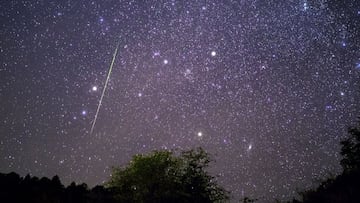When is the best time to watch the Draconid meteor shower of October 2024?
Fans of astronomical phenomena would do well to do some sky gazing, as the first meteor shower of fall 2024 is scheduled to dazzle spectators.


Meteor showers are some of the most spectacular phenomena in nature and this month we have the opportunity to enjoy the Draconids and the Orionids. The former arrive in the first days of the month while the latter will have their moment of splendor at the end of October.
Why are they called Draconids?
The Draconids occur when our planet passes through the ring formed by fragments of comet 21P/Giacobini-Zinner. The location from which the shooting stars appear to emerge is called the radiant point, and its location is often used to name the meteor shower.
The Draconid radiant point is located in the constellation Draco, or the Dragon. Also known as the Giacobinids, the comet that gives them their name was the first to be visited by a spacecraft, in this case the IC/ISEE 3 probe, in 1985.
READ ALSO: Some scientists push for a Category 6 to be added to the Saffir-Simpson scale
The short-lived Draconid meteor shower occurs this evening into tomorrow!
— McDonald Observatory (@mcdonaldobs) October 7, 2024
The meteors radiate from what are known as the Dragon’s Eyes – the stars Eltanin and Rastaban – in the constellation Draco.
If you're in or near a dark sky location, look up!#meteor#DarkSkies pic.twitter.com/gBYk3eJp76
The best dates to see the Draconids
Astronomy enthusiasts will be able to see this meteor shower in the sky for four days, from Oct. 6 to 10. However, according to the National Geographic Institute, “its moment of maximum activity occurs around October 8.”
Related stories
READ ALSO: The science of hurricane formation
When is the best time to watch the Draconid meteor shower of October 2024?
Tips for seeing the Draconids include looking up and northwards. Those in the northern hemisphere may be able to observe the Draconid shower as it peaks late Monday night into early Tuesday morning. There is a high chance for the phenomenon to be visible, because the moon is expected to only be experiencing 27% illumination during this period.


Complete your personal details to comment